INFERTILE GROUNDS / NEPLODNA TLA
locations / lokacije
SLANA – ISLAND OF PAG
In the Slana and Metajna concentration camps on the island of Pag, as well as in Jadovno on mountain Velebit, the first mass liquidations of detainees (Jews and Serbs) were conducted in the Independent State of Croatia. The camps were operational from mid - June to August 25th 1941, when the Italians occupied that area. In the camps on Pag from 15.000 to 18.000 people were killed. The prisoners, often exhausted by hunger and thirst, were thrown into a pit or taken out to sea by boat, killed and thrown overboard.
There are no commemorative plaques or markings in the places where these camps were located.
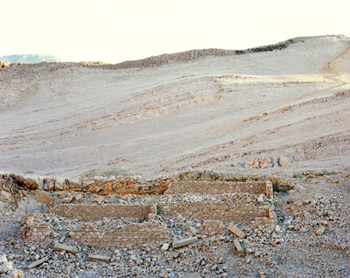
JASENOVAC
The Jasenovac concentration camp was a death camp in which men, women and children were killed because of their religion, ethnicity, ideological affiliation or sexual orientation between August 1941 and April 22nd 1945. The camp was built by the authorities of the Independent State of Croatia, installed in Croatian territory by the Nazi-fascist occupation forces.
In April 1945 the concentration camp was mined, burned and destroyed. Today, landscape of The Jasenovac Memorial Site is marked by mounds and hollows in the ground. The hollows mark the places where the camp buildings used to be, and the mounds mark the sites of graves or execution sites within the camp. Over the years, various interested parties have manipulated the number of Jasenovac victims, therefore the number of people killed has ranged from 30,000 to 700,000. Through the use of hundreds of different sources and a critical review of data for each individual victim, a figure of 83,145 was reached. These numbers are not final.


DOTRŠČINA
The woods of Dotrščina, in the north-eastern part of Zagreb are one of the sites where executions took place during the Indipendent State of Croatia (NDH). It is estimated that around 7.500 people were shoot at the site.
Among the victims were Croatian intellectuals and politicians Ognjen Prica, Božidar Adžija, Zvonimir Richtman, journalist and publicist Otokar Keršovani, who were shot on July 9th , 1941 as retaliation for Partisan activities. Croatian poet August Cesarec was also executed there on July 15th 1941.
At Dotrščina several monuments were raised, but some of them were damaged during the 1990's.
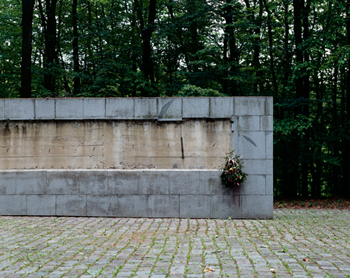

KLJUČ BRDOVEČKI
While working in the fields in the spring of 2009, the villagers of Ključ Brdovečki discovered a mass grave. Apparently members of the Croatian regular military units called domobrani (Home Guards) and soldiers of German Wehrmacht Blue Division were buried there along with a number of civilians. They were executed by members of the Yugoslav liberation units (partizani) in May 1945. After the corpses were buried villagers poured calx on them to prevent the stench of decomposing flesh to spread throughout the village. These events were not talked about during Socialism and still are disputed by many. Despite the announcements made in the media, excavation and exhumation have not yet started and the exact number of victims is not known. According to some unreliable sources, the number of the victims could reach a few thousand.
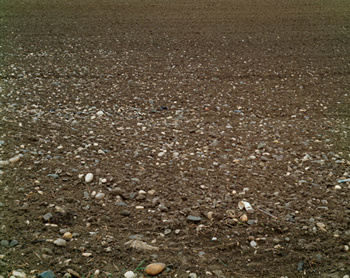
BUČJE
At the very beginning of the Croatian War for Independence, the Serbian rebels, assisted by the forces of the Yugoslav Army, organized a concentration camp in Bučje, near Pakrac. The prisoners were held in the building of the veterinary clinic. A dozen women were detained in a separate area. The camp was operational from August to December 1991. More than 300 Croatian soldiers and civilians were detained in the camp at various times. They were tortured, starved, beaten and humiliated. Twelve people were killed and the fate of 41 people is still unknown. After disbanding the camp, the detainees were taken to Stara Gradiška prison and they were exchanged in January 1992 under the supervision of the International Red Cross. No one has yet been convicted for the crimes at the Bučje camp.
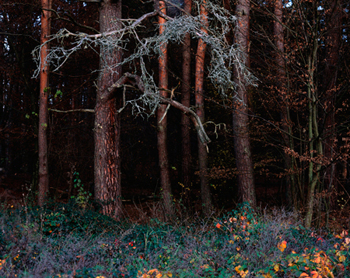
SLJEME – ADOLFOVAC
On December 7th 1991, around 11PM, five reservists of the Croatian police (so-called Merčep's escadrons of death) entered the apartment of a Serbian family named Zec in Zagreb neigborhood Trešnjevka. Mihajlo Zec, who tried to escape, was killed on the spot. His wife Marija and 12-year-old daughter Aleksandra, who witnessed the murder, were taken by van to the mountain lodge Adolfovac on Sljeme near Zagreb, shot and buried there. Although the killers Igor Mikola, Nebojša Hodak, Siniša Rimac, Munib Suljić i Snježana Živanović were arrested and pleaded guilty before a magistrate, they were released because of procedural errors during the investigation. In 2004 the Croatian government decided to pay financial assistance to the surviving members of the Zec family in the amount of 1.5 million kuna. Subsequently, their lawyer withdrew a lawsuit against the Croatian state in the Zagreb Municipal Court. Adolfovac burned down in 1993. Once a popular hikers' lodge, today is a just a forgotten ruin.
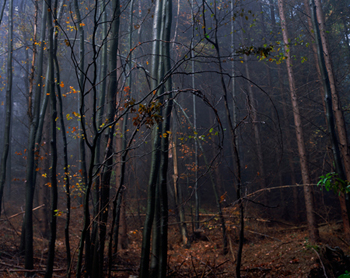
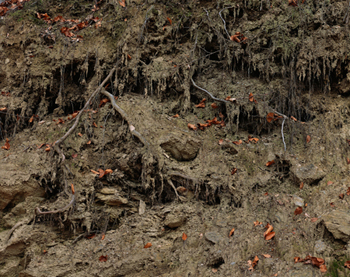
SISAK
During 1991 and 1992, a number of Sisak’s citizens of Serbian origin, although not involved in the rebellion, fell under suspicion and were taken away by groups of Croatian defenders. They were assaulted and tortured at various locations where Croatian anti-terror units were placed. Detainees were executed and their bodies were thrown into the Sava River. In some cases, whole families disappeared. The number of citizens who were tortured and/or liquidated ranges, according to various sources, from one hundred up to six hundred. Until recently no one was prosecuted for those crimes.
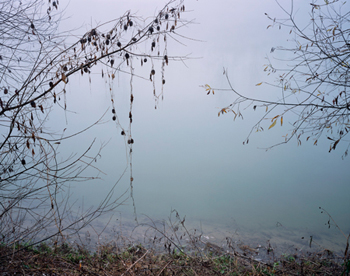
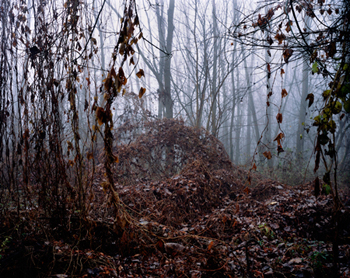
OVČARA
The Ovčara farm near the town of Vukovar is the scene of the worst crime committed against Croatia and one of the worst war crimes committed in Europe after World War II. At Ovčara, during the night of 20/21, November 1991, two days after the fall of town of Vukovar, paramilitary troops of Serbian rebels assisted by Yugoslav Army forces, executed 200 wounded Croatians - soldiers, civilians and medical personnel, aged 16 to 72 - who were taken from the Vukovar hospital. The bodies of those killed were thrown in a pre-dug hole and buried with bulldozers. Prior to execution they were exposed to constant beatings and torture. The International Criminal Tribunal for the former Yugoslavia indicted three former Yugoslav Army officers for the massacre at Ovčara: Mile Mrkšić (sentenced to 20 years imprisonment), Veselin Šljivančanin (sentenced to 17 years imprisonment) and Miroslav Radić (acquitted).

PAKRAČKA POLJANA - RIBNJAK (Fish pond)
In October 1991, members of reserve units of the Croatian Ministry of the Interior Affairs, commanded by Tomislav Merčep tortured and liquidated several Serbs in villages around Pakrac, Garešnica and Kutina. Some of the victims were brought from Zagreb, where a pavilion at the Zagreb Fair was converted into a temporary camp (Hall 22). In Pakračka Poljana prisoners were kept in the basement of elementary school and a locker room of a local football club. They were tortured there in the most brutal ways.
In November 1991, some members of the Croatian Military police broke into the homes of Serb civilians in the villages of Ribnjak and Marino Selo near Pakrac, under the pretext of searching for illegal weapons. Many of them were taken in for interrogation, but were tortured and then executed and thrown in the fish pond. On several occasions the guards of the fish pond found dead bodies in the water. Eighteen Serbian civilians were killed. In March 2009 six former members of the Military Police were sentenced to a total of 46 years in prison for crimes committed in Ribnjak. Supreme Court of Republic of Croatia has on March 23rd 2010, on basis of procedural mistakes, abolished the verdict of the Council of War Crimes of the County Court in Požega. The case has been redirected to a new trial at the County Court in Osijek. On December 10th 2010 the police have detained Tomislav Merčep on the basis of the demand of the Public defense attorney of Zagreb. He is being charged with commanding and immediate liability for war crimes against civilians in Pakračka Poljana.

MEDAČKI DŽEP
On September 9th 1993 the Croatian army launched a military operation called Medak Pocket, which had the aim of reducing the pressure of the Serbian rebels on the city of Gospić. Medak Pocket is an area that includes villages of Divoselo, Ćitluk and Počitelj. Although the Croatian forces had achieved a tactical victory and temporarily pushed Serbian forces from the area, the operation was marked by controversy because of skirmishes between the Croatian army and UN peace keepers, and the killing of 36 Serbian civilians, most of them older than 60, after the end of the military operation. Serbian properties were systematically looted and destroyed to prevent Serbian population from returning. In 2000 another 11 corpses were found in one septic tank in the part of the town which used to be inhabited by Serbs. Although part of the Serbian population eventually returned to the area, Medak Pocket is still largely abandoned.
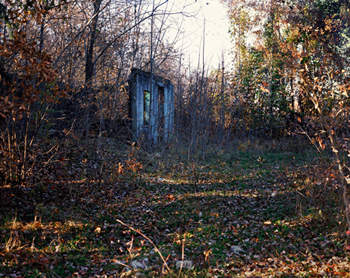
STUBICA
The city of Stubica was the center of the Croatian-Slovenian peasant revolt in early 1573. The Great Peasants' Revolt or Peasant War, as contemporaries called it, began in the Susedgrad-Stubica estate. Causes of rebellion were exacerbated by the position of farmers and limitations and interferences in peasant trade. Another cause was fighting among nobility, which armed the peasants, and the brutal treatment of serfs by Franjo and Gabriel Tahy.
Rebellion, which began in late January, came to its bloody finale in the battle on the field near Stubica, on February 9th 1573 in which the main rebel group was defeated. The most prominent leader of the rebels, Ambroz (Matija) Gubec, was captured and executed a few days later in Zagreb.
In Yugoslavia the Peasant revolt was a symbol of struggle against feudalism and of brotherhood and unity of two nations. Today Gubec and the Peasant revolt no longer represent the class struggle. The cooperation between Croatian and Slovenian peasants is ignored because of strained relations between the two countries.

BLEIBURG
When it became clear that the Quisling Independent State of Croatia will collapse with the fall of Nazism in Europe, a number of the Ustasha and Home Guard units (domobrani) and a number of civilians retreated in fear of revenge from the partisans towards the Austrian border in the hope of surrendering to the British forces. Around 30.000 people gathered near the Carinthian town of Bleiburg. According to the agreement that existed among the Allies that captured forces will be handed over to the armies they fought against, the British handed over the prisoners to the Yugoslav partisans on May 15th 1945.
A very small number of prisoners were killed on the plains near Bleiburg. Most were killed after crossing the Drava river, or on forced marches under inhumane conditions over long distances. Events that followed the Bleiburg are known as the Croatian Way of the Cross. The exact number of victims at Bleiburg and marches that followed has never been determined with certainty, and realistic estimates range from 20.000 to 50.000.
In Yugoslavia, the events that took place in Austria and in the Way of the Cross were covered up and it was forbidden to visit Bleiburg. After Croatia gained its independence, perceptions were changed and Bleiburg became a place of pilgrimage. Commemorations are often mired by the use of Ustasha symbols by some of the visitors.
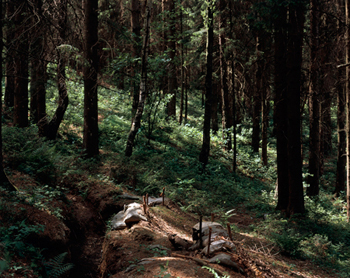
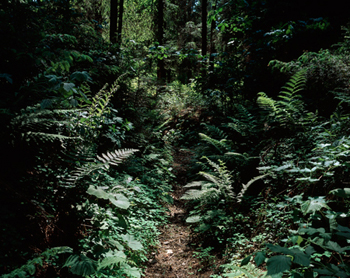
FOIBAS
Foibas are a natural karstic holes in Istria and the Slovenian coast in which members of the Yugoslav (Slovenian, and Croatian) Partisan formations in September 1943 (after the capitulation of Italy) threw Fascists, and their supporters, mostly Italians, as well as many innocent victims. Another outburst of violence occurred in May 1945 after the end of the World War II. An exact number of victims, the circumstances of the crimes, and the motives of the perpetrators have not yet been thoroughly investigated. A lot has been written on the subject in Italy, and the right wing parties have always exaggerated the number of victims of foibas and exodus of the Italian population from Istria, ignoring at the same time the victims of terror and massacres done by the Italian Fascists in Istria and Dalmatia. In Croatia the victims of foibas remained overshadowed by the victims of the Croatian Way of the Cross, and the topic hasn’t been thoroughly discussed. The topics of foibas and exodus of the Italian population after WWII has remained a constant subject of disputes for the Italians, Croatians, and Slovenians.
According to the writings of the Italian daily newspaper of the time, Corriere Istriano, between September 20th and 22nd 1943, 84 Italians had been cast into the foiba near Vinež. Germans, who had occupied the territory after the capitulation of Italy, hired the mineworkers from Labin to remove the bodies from the depth of 135 meters. On May 9th 1945 an unknown number of Italian and German soldiers, who have previously surrendered themselves on May 7th to Partisans in Muzil (Pula), were thrown in a deep foiba Golubinčina near Rakalj. According to some sources, from total number of approximately 2200 soldiers, mostly Germans (members of the 237th infantry division), tens of soldiers were executed immediately, around 800 were led to the Labin mine, and around 60 of them were killed in Golubinčina. Not long after the massacre, according to some of the locals, an intolerable odor had started to spread through Rakalj, and was felt for months. This unexplored foiba is only one amongst many scaffolds that can be found between Pula and Barban - the path that some 1200 soldiers started at today’s Pula airport. There are testimonies about Partisans who came a year later after the crime, and removed the bodies.
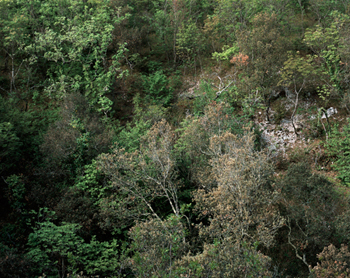
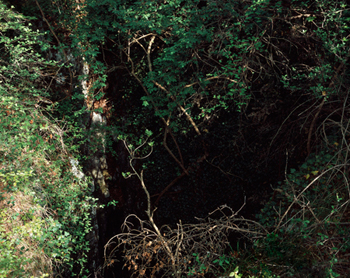
BAĆIN
On October 21st 1991 in the village of Baćin 56 elderly Croatians from Cerovljani and Hrvatska Dubica were killed. Members of the Serbian paramilitary troops escorted the civilians from a bus in Baćin and gunned them down with automatic weapons. They left the bodies unburied on banks of Una river. They later returned, dug holes with a dredge and buried the bodies. Perpetrators were never convicted for this war crime.

LOVAS
On October 10th 1991 Yugoslav Army and the Serbian paramilitary troops occupied the villages Lovas and Opatovac located near the Serbian border, 20 km southeast of Vukovar. The Croatians were forced to wear a white band on their sleeve for recognition; the non Serbian population was tortured and killed, the properties looted and devastated. On October 18th 1991 members of the Yugoslav Army, local authorities and Serbian voluntary divisions “Dušan Silni” took 50 Croatian civilians, held captive as work labor in Lovas, into the mine field near the village. The prisoners were forced into the mine field to clean it of mines. Several mines exploded, and the Serbian army forces opened fire. 21 civilians died, 14 were wounded. The local cemetery of Lovas was the site of a mass grave from which 68 victims were exhumed, 10 more were exhumed form individual graves. 14 people were charged for the crimes in Lovas. On July 26th 2012 the Supreme Court in Belgrade has convicted the self-proclaimed commander of the occupied Lovas Ljuban Devetak, to 20 years in jail. Others were sentenced to 4-14 years in jail.

DONJA GRADINA
Nearly half of the total number of victims of the concentration camp in Jasenovac was killed in the most gruesome ways in Donja Gradina, on the right bank of the Sava River. The first mass liquidation of prisoners in Donja Gradina, took place in January 1942. Since the winter was harsh, it was impossible to dig graves, so the Ustasha transported the villagers of Jablanac by ferry to Donja Gradina, killed them and then burned their bodies in the houses of the evicted villagers of Donja Gradina. This area was then used as a killing field until 1945.
In nine burial fields 105 mass graves are located, covering an area of 10,130 square meters. Later another 22 mass graves were found.
At the point where the river Una enters the river Sava, there used to be a poplar tree called "Poplar of sighs" or "Friar Satan's Poplar" because of numerous hangings and slaughter carried out in the most atrocious ways under or on the tree. The tree fell down in 1978. It was then preserved and protected in a horizontal position as a natural monument to the atrocities committed there.

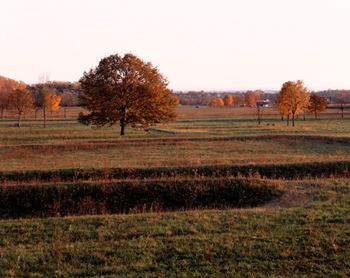
STUPIŠĆE (ISLAND VIS)
During decades of SFR Yugoslavia the island of Vis was closed to foreigners and transferred into great military fortress due to its strategic position. Military staff was often more numerous then local residents who were forced to live in isolation. More than 60 military facilities are placed on the surface of 90 km2 including underground garrisons such as missile base or cavern to shelter military fleet. The length of each tunnel is unknown. After the retreat of JNA (Yugoslav National Army), on May 30th 1992 all the documentation was taken away, cannons were blown up while there were several unmarked mine fields left on the island. JNA's artillery and missile base was located on cape Stupišće. Artillery positions, dug into the hill, were connected by a labyrinth of underground corridors. Cavern entrances were camouflaged by Styrofoam »rocks«, ventilation is placed inside the rocky objects that appear as traditional island houses. Consequences of 50-years' isolation of island of Vis is reflected in economical underdevelopment and inability to develop tourist industry. Massive emigration of local population from the island was associated with that very fact. Tunnels and other facilities are now abandoned, robbed and devastated. Thieves of iron dismantled and took away everything, even the huge 4-tones cannons. Only one of 37 enormous underground objects successfully changed its initial purpose and became a winery. Majority of facilities nowadays belong to Croatian Ministry of Defence, and some are returned to local authorities. Occasionally local tourist agencies guide visitors around the island's military heritage preserved and maintained in its current state by the isolated struggle of few locals who cherish the island's rich military history.

SVETA GERA / TRDINOV VRH
Sveta Gera is the highest peak of Žumberak (Gorjanci in Slovenian). Since 1923 it is named Trdinov vrh in Slovenia, after the literate Janez Trdina. Area of Sveta Gera is subject of border dispute between Slovenia and Croatia. In 1991 when JNA retreated from the barracks it was immediately occupied by Slovenian Army and since then this piece of land is under its control. Therefore, that is the reason and the trigger for the border dispute caused by disintegration of SFR Yugoslavia. There are numerous sections of controversy and dispute along the border, especially in Istria, Piran Bay and Žumberak. With the introduction and enforcement of ecological-fishing zone Croatia closed Slovenia's access to the international seas, while Slovenia as a member of EU took advantage and blocked opening of new chapters in Croatia's accession negotiations. Croatian government proposed the solution by calling for international arbitrage but that was rejected by Slovenia insisting on further negotiations. These events were followed by series of border incidents and arduous negotiations without solution. Slight progress was achieved only after several conversations between Jadranka Kosor and Borut Pahor. The arbitration agreement was finally signed on 4 November 2009 in Stockholm. Thus Slovenian government released all opened Croatian chapters in EU accession negotiations. By the end of 2014 five members of arbitrage council ought to decide on the border dispute. Until then Croatia ought to become a member of EU.
